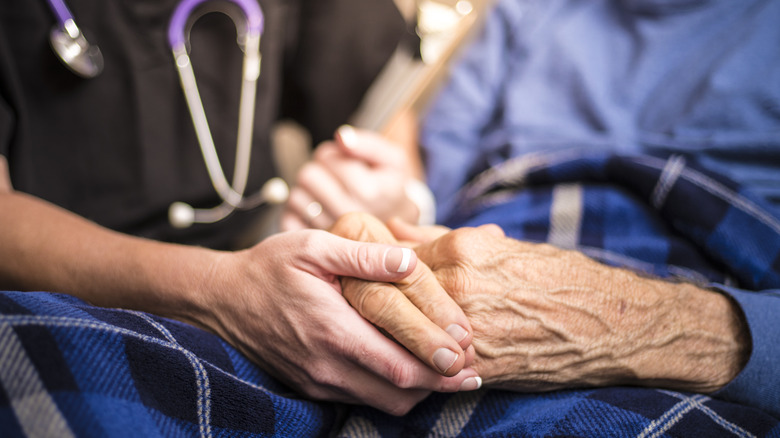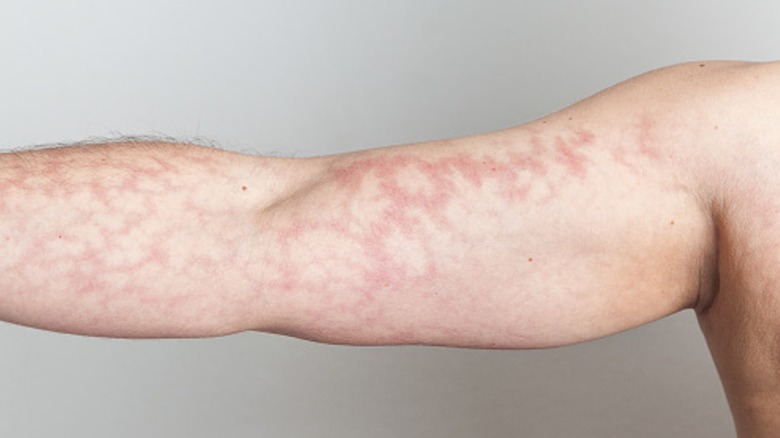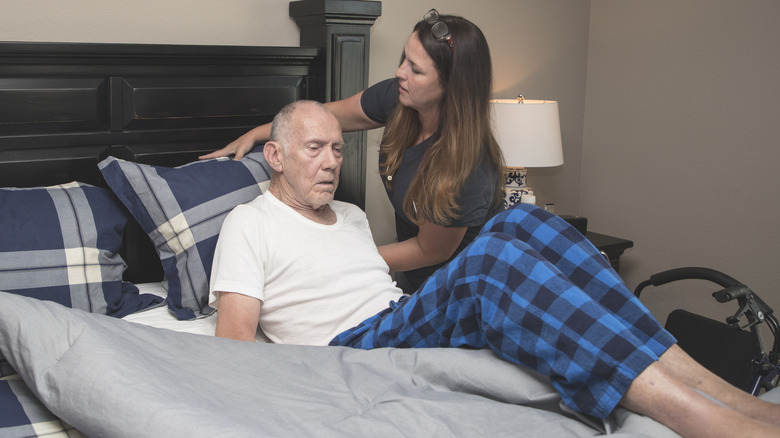What Happens To Your Skin Just Before Death
When reaching out to touch the hand of a person who has died, people often describe their skin as cold and clammy. This is because as our essential organs proceed to shut down, we experience a decrease in internal body temperature. However, our skin goes through many different phases prior to this moment.
Much like your heart, brain, liver, and all of your vital organs, your skin also ceases to function as we near death, explains the Hospice Foundation of America (HFA). In the weeks, days, and hours prior to one's passing, our skin goes through a variety of changes. In the final weeks of life, one's skin usually starts to thin (via HealthDirect). Color changes begin to occur in the days preceding death, with the skin often looking more gray or pale.
During one's last day of life or just within hours of death, many people experience mottled skin. Although mottled skin can develop on the lower body — including the feet, knees, or hands — mottled, blotchy skin that forms on the upper body is often a sign that a person is about to die, reports Omni Care Hospice.
What is mottled skin?
As blood pressure falls and circulation decreases, a patchy pattern may first emerge on the feet and progressively spread up the body (via Crossroads Hospice and Palliative Care). This web-like skin pattern is often purple or red in color. Discoloration of the lips may also occur, explains Parentis Health. Additionally, mottled skin is often accompanied by other signs of near death, such as slowed breathing.
For some people, mottled skin may develop within the last week of life. More often, however, the presence of mottled skin usually indicates that death is forthcoming. In these instances, there is no cure for mottled skin aside from making the dying patient feel at ease. Due to hindered blood flow, the person may feel cold as mottled skin develops. Covering them with a warm blanket can help keep the individual warm and calm. Loved ones of the dying may find comfort knowing that mottled skin itself is not painful.
A person with mottled skin may be more prone to falls
Although the presence of mottled skin does not cause physical pain for the dying, it has been linked with a higher risk of falls. Experts at Parentis Health note that because mottled skin is the result of reduced blood flow, this can cause blood pressure to drop. While most patients with mottled skin who are near death are not usually moving about freely, if they were to get up and walk around on their own, this drop in blood pressure may potentially cause them to lose consciousness and injure themselves after falling. For this reason, patients should be monitored during this stage of the dying process.
It's important to note that mottled skin is not solely indicative of dying. Rather, a person can develop mottled skin when outside in the cold or in response to taking certain medications (via Healthline). It can also be a sign of an alternative health condition, such as lupus, pancreatitis, aortic aneurysms, and more. Some people may also develop mottled skin if the body goes into shock due to a physical injury, infection, or excessive blood loss. In this event, a person will need urgent medical care. If you experience mottled skin and suspect it may be associated with a health condition, be sure to reach out to your doctor.



